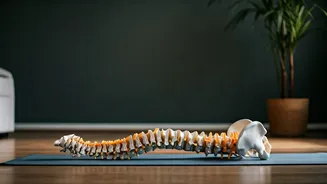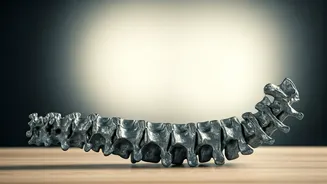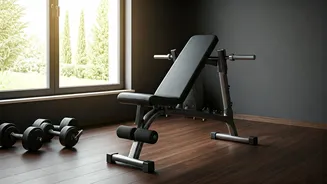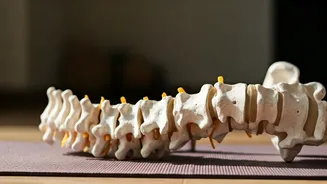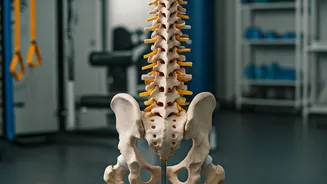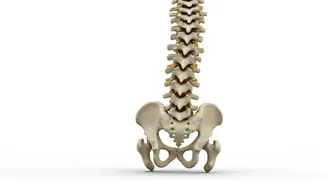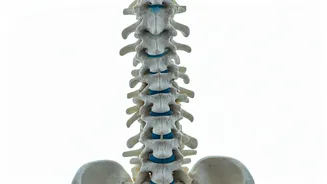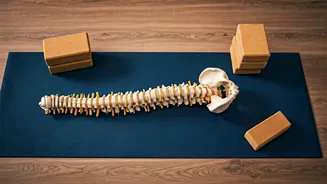Understanding Back Pain
Back pain, if ignored, can significantly diminish one's quality of life. It's not just a minor discomfort; it can lead to reduced mobility, decreased productivity,
and a general decline in well-being. Addressing back pain promptly is crucial, rather than dismissing it as a temporary issue. This neglect can result in chronic issues and a reduced capacity to perform daily tasks, from simple chores to demanding professional responsibilities. Regular exercise, along with correct posture and a healthy lifestyle, can help to mitigate the impact of back pain. The goal is to integrate proactive measures that protect and support spinal health, providing long-term advantages.
Cat-Cow Stretch
The Cat-Cow stretch is a gentle exercise suitable for all fitness levels. To begin, get down on your hands and knees, ensuring your hands are beneath your shoulders and your knees beneath your hips. First, round your spine towards the ceiling, tucking your chin to your chest in the 'Cat' pose. Then, reverse the movement: drop your belly toward the floor and lift your head and tailbone, looking up, in the 'Cow' pose. This exercise helps to mobilize the spine, improving flexibility and alleviating stiffness. Performing this stretch regularly can reduce back pain and improve posture. The rhythmic movement between the two poses promotes blood circulation to the spinal muscles, enhancing their strength and reducing soreness. Repeating this exercise several times can provide a soothing stretch for the back and help improve overall spinal health.
Pelvic Tilts Exercise
Pelvic tilts are an excellent exercise for strengthening core muscles and supporting the lower back. To start, lie on your back with your knees bent and feet flat on the floor. The key is to tilt your pelvis, first by flattening your lower back against the floor, tightening your abdominal muscles and then arching your lower back slightly. Focus on gentle movements and controlled breathing. This can help reduce back pain. This exercise strengthens the abdominal muscles, which is very important for supporting the spine. By doing pelvic tilts consistently, you can improve your posture and stability. The gentle movements target the core, improving the spine’s natural curve and reducing the stress on the back. Pelvic tilts are a low-impact exercise, suitable for all, making them a beneficial addition to your daily routine.
Knee-to-Chest Stretch
The knee-to-chest stretch offers quick relief from back pain. To start, lie on your back with your knees bent and your feet flat on the floor. Gently bring one knee towards your chest, holding it with your hands, and gently pull it closer. You should feel a stretch in your lower back. Hold this position for about 20-30 seconds, then release and repeat with the other knee. This exercise is particularly effective for alleviating lower back pain. The stretch helps to relax the muscles in the lower back and relieve tension. It's an easy-to-do exercise that can be performed at any time, offering immediate pain relief. Regularly performing the knee-to-chest stretch can enhance flexibility, reduce stiffness, and improve overall spinal health.
Bird Dog Exercise
The Bird Dog exercise is effective for improving core strength, stability, and balance, all of which are crucial for a healthy back. Begin on your hands and knees, ensuring your hands are directly beneath your shoulders and your knees beneath your hips. Simultaneously extend one arm forward and the opposite leg backward, keeping your back straight and your core engaged. Hold this position for a few seconds, then return to the starting position and repeat on the other side. The Bird Dog strengthens the abdominal and back muscles. Regular practice can help prevent back pain. Maintaining a steady core while performing this exercise is important to avoid any strain on the lower back. Including the Bird Dog in your routine can improve coordination, stability, and help maintain spinal health.
Side Plank Exercise
Side planks are a great exercise for strengthening the core muscles and promoting spinal stability. To do a side plank, lie on your side, placing your forearm on the floor beneath your shoulder, then lift your body, forming a straight line from head to feet. Keep your core engaged and your hips elevated. Hold this position for as long as possible, then lower yourself slowly and repeat on the other side. Side planks work the oblique muscles, which support the spine and provide stability. Strengthening the obliques can also reduce lower back pain. This exercise builds core strength and can help improve your posture. Regularly practicing side planks can increase endurance and provide additional support for your spine, reducing back pain.
